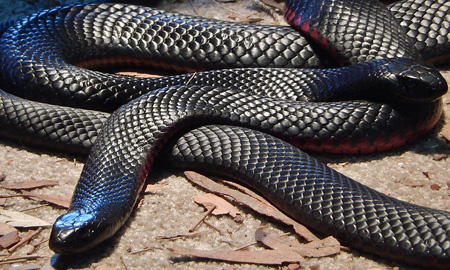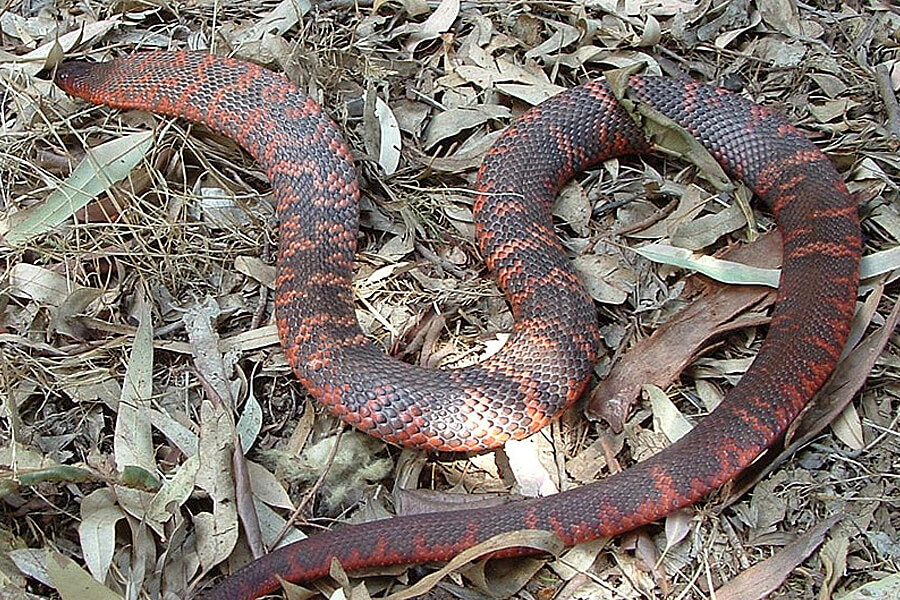Introduction
The Tasmanian tiger serpent, clinically known as Notechis scutatus, is just one of Australia's a lot of fascinating reptiles. Found largely in Tasmania and its surrounding islands, this serpent has actually garnered attention not only for its striking appearance however additionally for its intricate habits and important role in the community. This write-up will certainly check out the different elements of the Tasmanian tiger snake's environment, habits, anatomy, and communications with people while supplying vital details about precaution in instance of a serpent bite.
Whether you're a scientist, a wild animals lover, or just somebody interested about these interesting creatures, this comprehensive guide promises to deliver understandings that are both interesting and appealing. So allow's start this journey to understand the Tasmanian tiger snake better!
The Tasmanian Tiger Snake: An Overview
Physical Features of the Tasmanian Tiger Snake
Tiger serpents are characterized by their distinctive pigmentation and patterns. They generally display a mix of yellow or lotion red stripes on a dark brown or black history-- therefore the name "tiger." Adult tiger serpents can grow up to about 2.1 meters long, although the majority of people average around 1.5 meters.
Key Functions:
- Coloration: Varies from dark brownish to olive eco-friendly with lighter bands. Size: Grownups usually range from 1.2 to 2.1 meters. Head Forming: Definitely wide with popular eyes.
Distribution and Habitat of the Tasmanian Tiger Snake
The Tasmanian tiger serpent mostly populates seaside areas, marshes, marshes, and grasslands in Tasmania. It grows in settings where it can conveniently accessibility water sources considering that it is often discovered near streams or lakes.
Habitat Preferences:

- Wetlands: Perfect for hunting target like frogs and tiny mammals. Coastal Locations: Deals abundant food resources. Grasslands: Offers cover and basking spots.
Understanding Tiger Serpent Behavior
Feeding Behaviors of the Tasmanian Tiger Snake
Tiger snakes are carnivorous and opportunistic feeders. Their diet regimen is composed primarily of frogs, fish, little animals, and birds. They rely upon their eager eyesight and swift motions for hunting.
Dietary Breakdown:
- Frogs: A primary part as a result of wealth in wetland habitats. Fish: Often captured when swimming in superficial waters. Small Animals: Sometimes exploit rodents.
Breeding Behavior of the Tasmanian Tiger Snake
Tiger serpents have a remarkable reproductive cycle. Mating typically happens in spring after emerging from hibernation. Women tiger snakes bring to life live young instead of laying eggs, which is rather one-of-a-kind amongst reptiles.
Reproductive Cycle:
- Mating Season: Spring (September to November). Gestation Duration: Roughly 3 months. Litter Size: Ranges from 20 to 40 infant tiger snakes.
Aggression and Defense Mechanisms of the Tasmanian Tiger Snake
Though they can be aggressive when threatened, tiger snakes commonly favor to retreat rather than confront risk straight. Their main defense reaction include biting when caught or presenting their dimension with hissing.
Defensive Strategies:
- Hissing Audio: A caution signal showing distress. Bite Feedback: A last option when escape alternatives are limited.
Are Tiger Snakes Venomous? Recognizing Their Venom
Venom Composition and Effects
Yes! The Tasmanian tiger serpent is venomous. Its venom contains neurotoxins that can create severe injury or even fatality if left neglected. The effects of a bite can consist of paralysis, Learn more swelling at the bite website, nausea, and other systemic symptoms.
Venom Characteristics:
- Neurotoxic Elements: Influence nerves functioning. Hemotoxic Impacts: Can cause cells damage.
Common Signs and symptoms Adhering to a Tiger Snake Bite
Recognizing signs quickly is critical for effective first aid monitoring after a snake bite:
- Severe pain at bite site Swelling Nausea or vomiting Difficulty breathing
First Help for Serpent Bites: What You Required to Know
Immediate Steps After a Tiger Serpent Bite
In case you experience a situation entailing a tiger serpent bite, it's important to act swiftly: Click here for more

Creating Your Snake Bite First Aid Kit
Having an effectively equipped emergency treatment set can make all the distinction during emergencies:|Item|Objective|| ------|---------|| Compression plaster|To paralyze limb|| Splint|To maintain damaged area|| Antibacterial wipes|For cleaning up wounds|
FAQs Concerning the Tasmanian Tiger Snake
What do infant tiger snakes eat?
Baby tiger snakes mostly prey on small bugs and amphibians until they grow large sufficient to quest larger target like frogs or little fish.
How harmful is a tiger snake bite?
A tiger serpent bite can be exceptionally harmful due to its potent poison; immediate clinical focus is necessary for survival.
Where are eastern tiger snakes found?
Eastern tiger snakes inhabit coastal areas throughout southeastern Australia however are less usual than their Tasmanian counterparts.
What needs to I do if I see a tiger snake?
Maintain your distance; do not attempt to handle it unless you're trained to do so-- most bites happen during attempts at capture or mishandling.
Can I endure without antivenom after being bitten?
While some people might endure without antivenom depending on numerous elements such as wellness conditions and time considered therapy; Best first aid practices for Australian snakebites looking for prompt medical assistance is constantly advised as it significantly boosts survival chances.
Are there any kind of certain precaution I must take while treking in Tasmania?
Always use durable boots, remain on significant routes, avoid tall grass where presence might be limited; familiarize yourself with neighborhood wildlife before going out right into nature!

Conclusion
The Tajamanian tiger serpent stands for an essential part of Australia's abundant biodiversity landscape both ecologically as predators and culturally as symbols within Australian folklore. Comprehending their habitat preferences in addition to habits gives insight into how we can coexist safely while valuing wildlife borders-- keeping in mind that recognition leads us towards safer journeys outdoors!
By staying educated about potential dangers such as envenomation from attacks while additionally taking preventive measures makes sure favorable experiences when running into these fascinating animals!
In verdict, whether you're captivated by their striking look or astounded by their complicated habits-- the Tasmanian tiger snake definitely deserves acknowledgment past simple attraction-- it envelops nature's charm linked elaborately within our ecosystems!